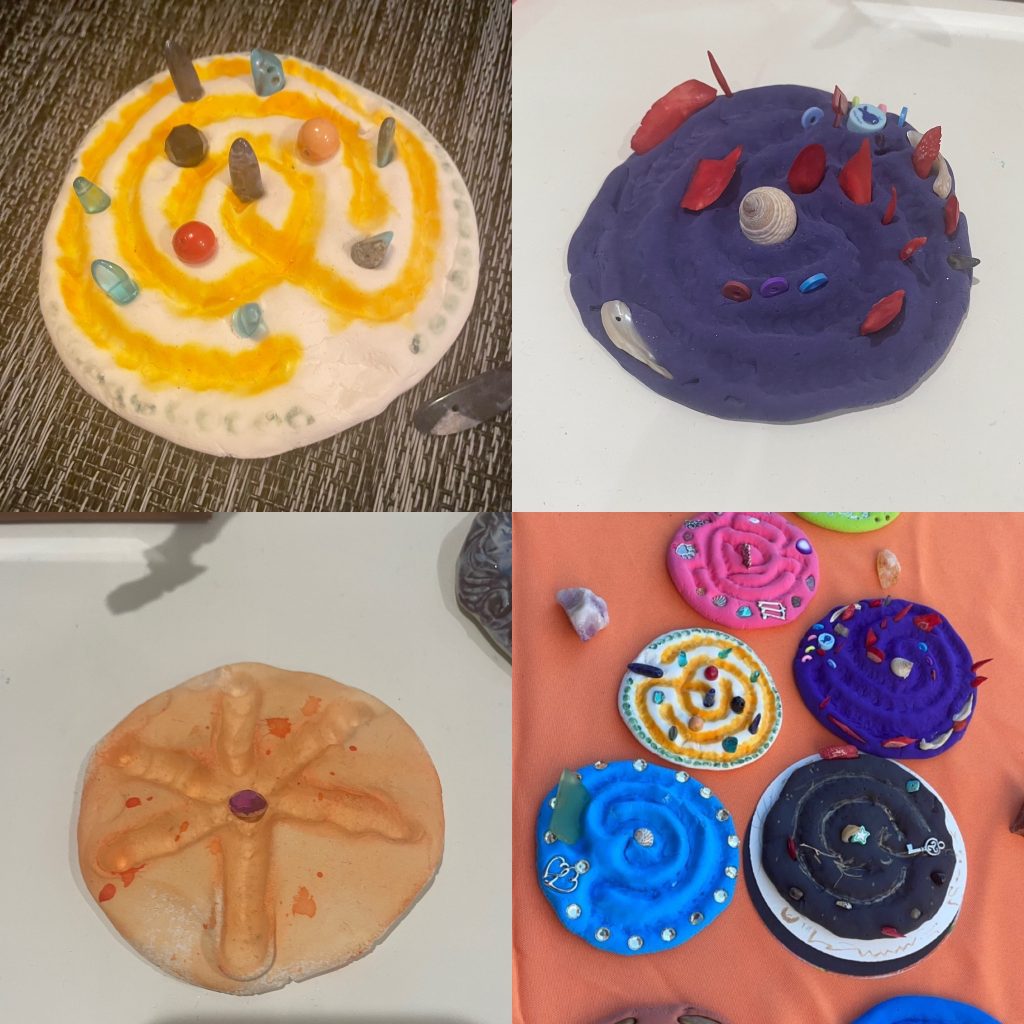Saturday, May 4th with Miriam at the Franciscan Retreat Center, 3010 N. Perry Ave. Tampa, FL 33603
A labyrinth is not a maize. A maize is where you lose yourself. A labyrinth is where you find yourself. A labyrinth is part of a contemplative journey and practice. Join me on this day to not only walk a labyrinth and set your intention for yourself and world peace. You will also make a palm-size or paper portable labyrinth to take home with you for continued meditative use.
Labyrinth walking is considered an ancient meditative practice used by many different faiths for spiritual centering, contemplation, and prayer. Entering the serpentine path of a labyrinth, you walk slowly while quieting your mind and focusing on a spiritual question or prayer. It is a single winding path from the outer edge in a circuitous way to the center.
Labyrinths are used world-wide for many applications, including, but not limited to: 1) a way to quiet the mind, 2) calm anxieties, 3) recover balance in life, 4) enhance creativity 5) encourage meditation, 6) provide insight, 7) enable self-reflection, and 8) reduce stress.
Walking a labyrinth is a form of active meditation, which is unique from meditation while standing still, sitting, or lying down. Active meditation provides many benefits, and labyrinth walking is a unique spiritual practice. As the labyrinth winds through, it becomes a mirror for where we are in our lives; it touches our sorrows and releases our joys. People are encouraged to walk with an open mind and heart. A labyrinth has only one path.
Its many benefits allow us to release energy and tension, activate focused attention, bring about clarity, lower heartrate and blood pressure, assist breathing regulation, and enhance the brains productivity. Setting an intention before you begin your labyrinth journey helps activate all these applications and benefits.
Sources: Moffitt Cancer Center, Very Well Fit, American Nurse Journal, and the Labyrinth Society.

